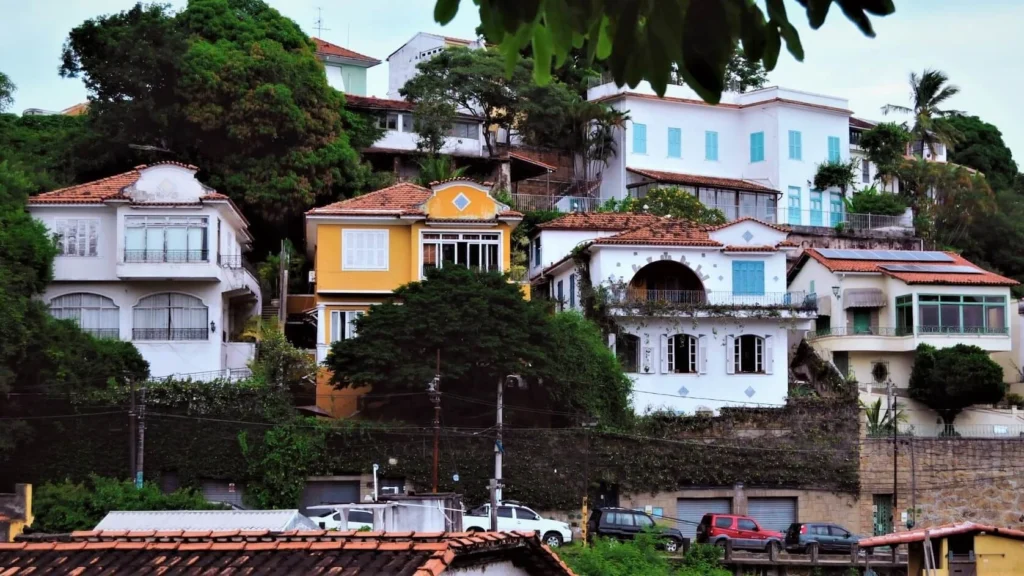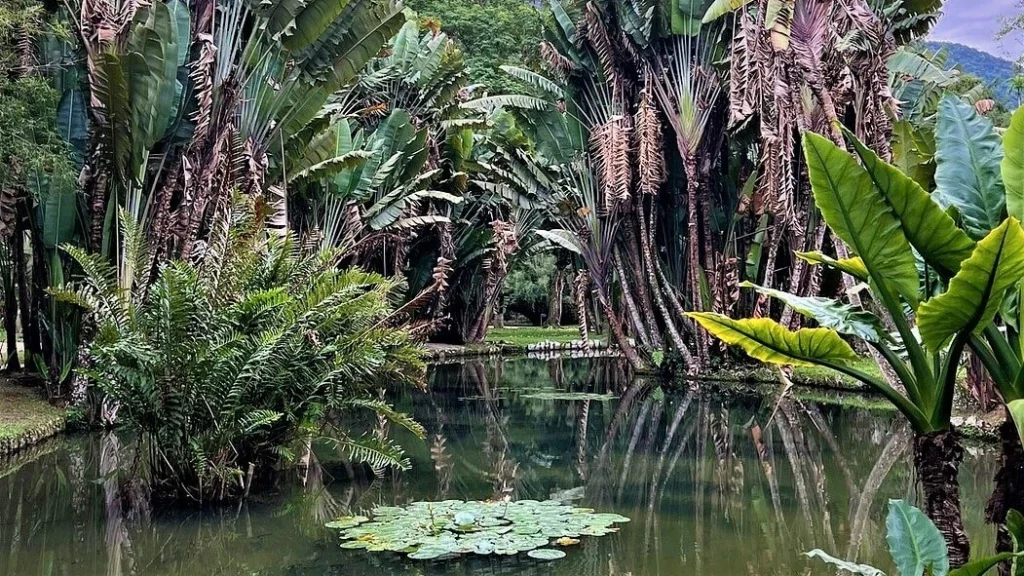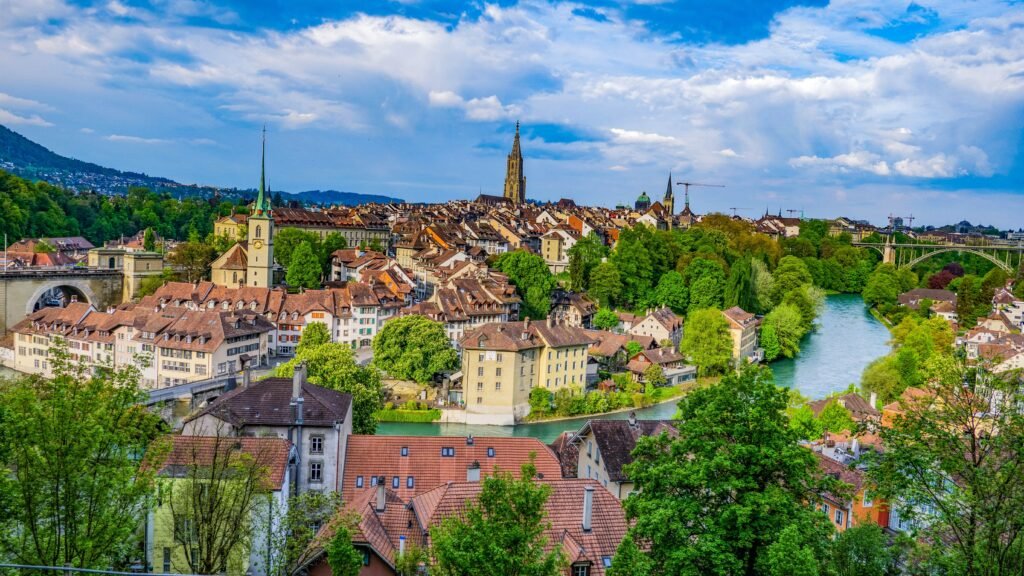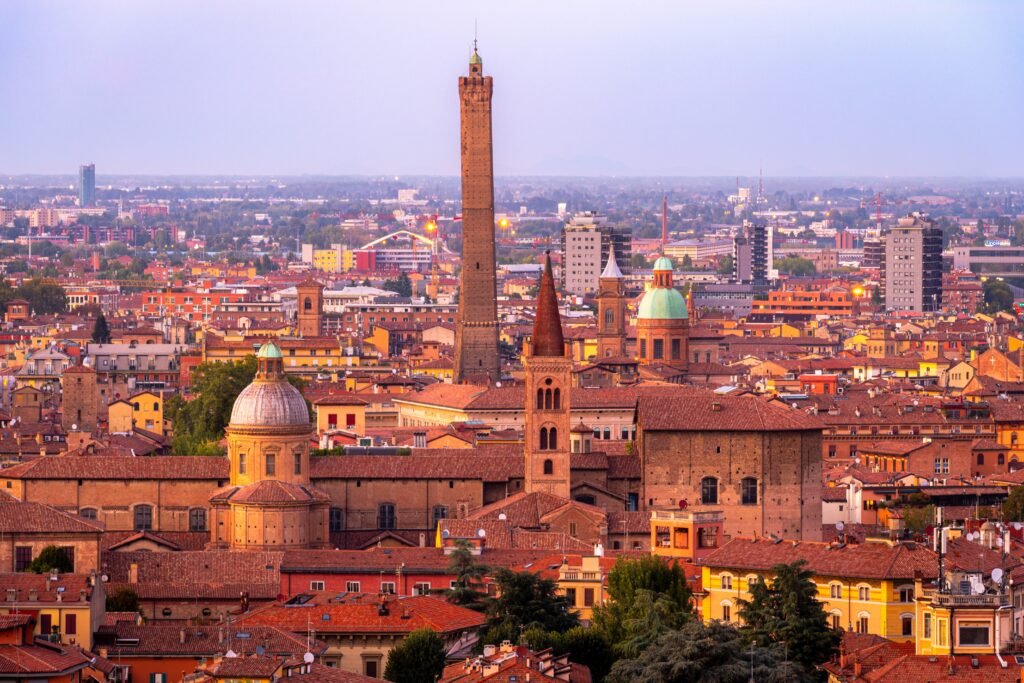Welcome to the mesmerizing world of Rio de Janeiro, where the sun kisses the sandy shores, and the rhythms of samba dance through the air. Rio de Janeiro holidays are a kaleidoscope of experiences, blending natural beauty, vibrant culture, and exhilarating adventures. In this travel blog, we’ll take you on a journey through the iconic attractions, hidden gems, and cultural delights of this Brazilian gem. Are you planning a trip to Rio de Janeiro? Check here for flights.
Table of Contents
Copacabana and Ipanema Beaches
Copacabana and Ipanema Beaches are two of the most iconic and beautiful beach destinations in Rio de Janeiro, each with its own unique charm and character. Let’s dive deeper into what makes these beaches so special:
Copacabana Beach: Copacabana Beach, often simply referred to as “Copacabana,” is perhaps the most famous beach in Rio de Janeiro and one of the most recognizable beaches in the world. Here’s what you need to know about this stunning stretch of sand:
- Location: Copacabana Beach is located in the southern part of Rio de Janeiro, near the neighborhoods of Copacabana and Leme.
- Scenic Beauty: This beach boasts a long crescent-shaped shoreline framed by the iconic Copacabana Palace and numerous high-rise buildings. The view of the surrounding hills, including Sugarloaf Mountain, provides a breathtaking backdrop.
- Activities: Copacabana Beach offers a wide range of activities for visitors. You can relax on the soft, golden sands, rent a beach chair and umbrella from one of the vendors, and soak up the sun. The beach is also a hub for beach sports like volleyball and soccer, and there are designated areas for swimming.
- Boardwalk: The famous Copacabana boardwalk, made of wavy black and white Portuguese-style mosaics, stretches for 4.5 kilometers. It’s a great place for a leisurely stroll, jog, or bike ride, and it’s lined with kiosks selling coconut water, snacks, and souvenirs.
- Nightlife: As the sun sets, Copacabana comes alive with beachside bars and restaurants offering live music and delicious Brazilian dishes. The vibrant nightlife here is not to be missed.

Ipanema Beach: Ipanema Beach, located just to the southwest of Copacabana Beach, is another gem of Rio de Janeiro that has its own allure:
- Location: Ipanema Beach is situated in the upscale neighborhood of Ipanema, known for its fashionable boutiques, restaurants, and cultural scene.
- Beauty and Atmosphere: Ipanema Beach is famous for its stunning beauty and the Two Brothers Mountain (Morro Dois Irmãos) in the background. The atmosphere here is more relaxed and upscale compared to Copacabana, making it a favorite spot for both locals and international tourists.
- Posto (Lifeguard Tower) 9: Posto 9 at Ipanema Beach is an iconic meeting point and is often associated with the city’s progressive and liberal culture. It’s a hotspot for sunbathers, surfers, and the LGBTQ+ community.
- Surfing: Ipanema Beach is known for its excellent surfing conditions, and you can rent surfboards and take lessons from the local surf schools.
- Shopping: The nearby streets of Ipanema offer a plethora of boutiques, art galleries, and unique shops, making it a great place for shopping and exploring.
- Sunset Views: Like Copacabana, Ipanema Beach offers stunning sunset views, and you can often find people applauding the sun as it sets over the horizon.
Both Copacabana and Ipanema Beaches encapsulate the spirit of Rio de Janeiro, offering a blend of natural beauty, culture, and a vibrant beach culture. Whether you choose to relax on the golden sands, explore the bustling boardwalk, or indulge in the nightlife, these beaches are essential stops on any Rio de Janeiro holiday.

Christ the Redeemer
Christ the Redeemer, or “Cristo Redentor” in Portuguese, is one of the most iconic and recognizable landmarks not only in Rio de Janeiro but also in the world. Here’s a deeper look into this awe-inspiring statue and its significance:
Location:
- Christ the Redeemer stands atop the Corcovado Mountain, which is part of the Tijuca Forest National Park. This strategic location offers panoramic views of Rio de Janeiro and its surroundings.
Statue Details:
- The statue itself is an imposing 98 feet (30 meters) tall, excluding the 26-foot (8-meter) pedestal. It has a wingspan of 92 feet (28 meters).
- Made of reinforced concrete and soapstone, it weighs approximately 635 metric tons.
- The design of Christ the Redeemer was created by Brazilian engineer Heitor da Silva Costa and sculpted by French artist Paul Landowski. It was completed in 1931.
Symbolism:
- The statue of Christ the Redeemer is a symbol of Christianity and a representation of Jesus Christ’s open arms embracing the city and its people. It symbolizes peace, love, and unity.
- It also serves as a symbol of Brazil’s culture and hospitality, welcoming visitors from all over the world with open arms.
UNESCO World Heritage Site:
- In 2007, Christ the Redeemer was designated as a UNESCO World Heritage Site, recognizing its cultural and historical significance.
Accessibility:
- Visitors can reach the summit of Corcovado Mountain and the statue using the Corcovado Rack Railway, a scenic train ride that takes you through the lush Tijuca Forest. Alternatively, there are hiking trails for those who prefer a more active approach.
Views:
- Once you reach the summit, you are treated to panoramic views of Rio de Janeiro, including landmarks like Sugarloaf Mountain, Copacabana Beach, and Guanabara Bay. The vista is particularly breathtaking during sunrise and sunset.
Experiencing the Statue:
- Visitors can climb the stairs within the pedestal to reach the base of the statue, where they can get an up-close view of Christ the Redeemer.
- The viewing platform at the top of the statue’s head offers a unique perspective, although access may be limited and is subject to weather conditions.
Lighting and Events:
- The statue is often lit up at night and is sometimes illuminated with special colors to mark significant events or celebrations.
- Special events, concerts, and religious ceremonies are occasionally held at the base of the statue, adding to its cultural significance.
Conservation Efforts:
- Over the years, Christ the Redeemer has undergone restoration and conservation efforts to preserve its structural integrity and appearance, including cleaning and repairing the soapstone surface.
Visiting Christ the Redeemer is not just about admiring a remarkable statue; it’s also about connecting with the spiritual and cultural essence of Rio de Janeiro. The combination of breathtaking natural beauty and this iconic monument makes it a must-visit destination for travelers from around the world.

Sugarloaf Mountain (Pão de Açúcar)
Sugarloaf Mountain, or “Pão de Açúcar” in Portuguese, is another iconic natural landmark that graces the cityscape of Rio de Janeiro. This distinctive peak offers visitors breathtaking views of the city, Guanabara Bay, and the surrounding landscape. Here’s a more detailed look at Sugarloaf Mountain:
Location:
- Sugarloaf Mountain is situated at the entrance of Guanabara Bay in the neighborhood of Urca, near the city center of Rio de Janeiro.
Geological Formation:
- Sugarloaf Mountain is a granite peak rising approximately 396 meters (1,299 feet) above the harbor and bay. Its name, “Pão de Açúcar,” translates to “Sugar Loaf” in English, referring to its resemblance to the traditional shape of sugarloafs that were used to mold and transport sugar in the past.
Accessibility:
- Access to Sugarloaf Mountain is made possible by a cable car system that transports visitors to the summit. The cable car journey involves two stages: the first cable car takes you to Morro da Urca, a smaller hill adjacent to Sugarloaf, and the second cable car ascends to the summit of Sugarloaf Mountain.
- The cable car ride itself is a memorable experience, offering stunning views of the city and bay as you ascend to the top.
Views:
- Once you reach the summit of Sugarloaf Mountain, you are treated to 360-degree panoramic views that are nothing short of spectacular. On clear days, you can see landmarks like Christ the Redeemer, Copacabana Beach, Ipanema Beach, and more.
- Sunset is a particularly popular time to visit Sugarloaf Mountain, as the city transforms with golden hues, and the lights of Rio begin to twinkle.
Outdoor Activities:
- In addition to soaking in the views, visitors can explore several hiking trails around the base of Sugarloaf Mountain. These trails offer opportunities for nature enthusiasts to immerse themselves in the lush vegetation of the area.

Events and Activities:
- Sugarloaf Mountain occasionally hosts special events, including music concerts and cultural exhibitions, creating a vibrant atmosphere on the summit.
History:
- The cable car system and the development of Sugarloaf Mountain as a tourist attraction date back to the early 20th century, making it one of the oldest cable car systems in the world.
Dining Options:
- The summit of Sugarloaf Mountain features a restaurant where you can savor delicious Brazilian cuisine while enjoying the views. It’s a popular spot for a meal with a view.
Conservation:
- Efforts have been made to conserve the natural beauty of Sugarloaf Mountain and the surrounding area, preserving its status as a stunning natural attraction.
Visiting Sugarloaf Mountain is a quintessential part of any trip to Rio de Janeiro, offering a unique perspective on the city’s stunning geography and natural beauty. Whether you’re an outdoor enthusiast, a photography buff, or simply seeking awe-inspiring vistas, Sugarloaf Mountain is sure to leave an indelible mark on your Rio de Janeiro holiday.

Samba and Carnaval
Samba and Carnaval are two vibrant and inseparable cultural phenomena that define the spirit of Rio de Janeiro and Brazil as a whole. Let’s delve deeper into these lively and captivating aspects of Brazilian culture:
Samba:
Origin and History:
- Samba is a Brazilian musical genre and dance style that originated in the early 20th century, primarily in the Afro-Brazilian communities of Rio de Janeiro, especially in the neighborhood of Lapa and the favelas (shantytowns). It has deep African roots, mixed with European and indigenous influences.
Rhythmic Diversity:
- Samba music is characterized by its infectious rhythm, marked by the distinctive beat of the surdo (a type of drum), tamborim (a small drum), and other percussion instruments. It’s known for its lively, syncopated, and often improvisational melodies.
Dance:
- Samba dance is an integral part of the culture, featuring energetic and sensual movements. There are different styles of samba dance, with Samba no Pé being one of the most popular, known for its intricate footwork and hip movements.
Samba Schools:
- Rio de Janeiro is home to numerous samba schools, which are community-based organizations that practice and perform samba. These schools compete in the annual Rio Carnaval parade (more on that below) and play a significant role in preserving and evolving samba culture.
Samba in Everyday Life:
- Samba is not limited to special occasions; it’s an integral part of Brazilian daily life. You can find samba performances in bars, clubs, and local gatherings across the country.
Carnaval:
Carnaval in Rio de Janeiro:
- Rio Carnaval is the world’s largest and most famous carnival celebration. It typically takes place in February or March, depending on the date of Easter. The festivities last for several days, with the most intense celebrations occurring in the week leading up to Ash Wednesday.
Samba Parades:
- The centerpiece of Rio Carnaval is the samba parades, where various samba schools compete for the title of champion. Each samba school selects a theme, designs elaborate costumes and floats, and performs an intricately choreographed parade routine at the Sambadrome, a specially built parade stadium.
Costumes and Floats:
- The costumes and floats in the Rio Carnaval parades are a visual feast. They often reflect themes related to Brazilian history, culture, and social issues. The amount of creativity and craftsmanship that goes into these costumes is staggering.
Street Parties (Blocos) and Neighborhood Celebrations:
- In addition to the Sambadrome parades, Rio Carnaval features countless street parties known as blocos. These blocos take place in various neighborhoods, and participants don colorful costumes, dance to samba music, and enjoy an exuberant street party atmosphere.
Samba Music and Dance:
- During Carnaval, samba music and dance are everywhere. You can expect to see and hear live samba bands, street musicians, and impromptu dance performances throughout the city.
Cultural Significance:
- Carnaval is not just a party; it’s deeply rooted in Brazilian culture and history. It provides an opportunity for Brazilians to express their creativity, identity, and unity while celebrating their diverse cultural heritage.
Global Attraction:
- Rio Carnaval attracts visitors from all over the world who come to witness the spectacle, join the celebrations, and immerse themselves in the infectious energy of the event.
Samba and Carnaval are the heartbeat of Rio de Janeiro’s cultural identity, embodying the city’s vibrant spirit, rich history, and passion for music and dance. To truly experience the essence of Rio de Janeiro and Brazilian culture, attending Carnaval or witnessing a samba performance is an absolute must. It’s a celebration of life and a testament to the joyous and welcoming nature of the Brazilian people.

Santa Teresa
Santa Teresa is a charming and bohemian neighborhood in Rio de Janeiro that offers a unique blend of history, art, and culture. Situated on the hills overlooking downtown Rio, Santa Teresa is known for its narrow winding streets, colonial architecture, and an atmosphere that transports you to a bygone era. Here’s a closer look at this delightful neighborhood:
Historical Background:
- Santa Teresa was originally a working-class neighborhood that attracted immigrants, artists, and intellectuals in the 19th and early 20th centuries. Many of the houses in the area date back to this period, giving it a distinct architectural character.
Colonial Architecture:
- One of the most captivating aspects of Santa Teresa is its well-preserved colonial architecture. You’ll find colorful houses adorned with ornate tiles, wrought-iron balconies, and lush gardens. The neighborhood’s historical houses have been converted into boutique hotels, restaurants, and art studios.
Artistic Hub:
- Santa Teresa has long been an artist’s enclave, with many painters, sculptors, and writers calling it home. The neighborhood’s artistic spirit is evident in its galleries, studios, and street art. You can explore local art at spaces like the Chácara do Céu Museum, which houses an impressive collection of Brazilian modernist art.
Selarón Steps (Escadaria Selarón):
- One of Santa Teresa’s most famous attractions is the Selarón Steps, created by Chilean artist Jorge Selarón. These colorful mosaic-covered steps are a work of art that connects Santa Teresa to the Lapa neighborhood. They are a popular spot for visitors and photographers.
Parque das Ruínas:
- The Parque das Ruínas (Ruins Park) is another intriguing attraction. It’s a former mansion that was turned into a cultural center. From its hilltop location, you can enjoy panoramic views of Rio de Janeiro, making it a popular spot for sunset gazing.
Bohemian Vibes:
- Santa Teresa has a laid-back and bohemian atmosphere. Its streets are dotted with quaint cafes, art studios, and craft shops. It’s a fantastic place to explore on foot, discovering hidden treasures along the way.
Gastronomy:
- The neighborhood is known for its diverse dining options. You can savor delicious Brazilian and international cuisine at restaurants, ranging from cozy bistros to upscale eateries. Be sure to try a traditional Brazilian dish like feijoada while you’re there.
Street Parties and Festivals:
- Santa Teresa hosts street parties and festivals throughout the year, where you can experience live music, dance, and the lively spirit of Brazilian celebrations. The neighborhood truly comes alive during these events.
Eclectic Community:
- Santa Teresa has a diverse and eclectic community that includes artists, musicians, expatriates, and local residents. This mix of backgrounds and influences contributes to the neighborhood’s unique character.
Transportation:
- To reach Santa Teresa, you can take a historic tram, known as the Santa Teresa Tram, which winds its way up the hill from the city center. The tram ride itself is a nostalgic experience and offers scenic views.
Santa Teresa is a hidden gem in Rio de Janeiro, offering a tranquil escape from the bustling city below while providing a rich cultural experience. It’s a place where history and creativity intersect, making it a must-visit neighborhood for travelers seeking an authentic and artistic side of Rio de Janeiro.

Tijuca Forest National Park
Tijuca Forest National Park, known as “Parque Nacional da Tijuca” in Portuguese, is a magnificent and ecologically significant protected area located within the city limits of Rio de Janeiro, Brazil. Covering a vast expanse of lush rainforest, it stands as a testament to conservation efforts in one of the world’s largest urban forests. Here’s a deeper exploration of this remarkable natural gem:
Historical Significance:
- Tijuca Forest National Park holds historical importance as it was once heavily deforested in the 19th century for coffee plantations. In an unprecedented move, Emperor Dom Pedro II ordered the reforestation of the area in the mid-1800s, making it the world’s first national park to be reforested.
Location:
- The park is nestled within the city of Rio de Janeiro and is easily accessible from the city center. It covers an area of approximately 32 square kilometers (12.4 square miles), making it one of the largest urban forests in the world.
Ecological Diversity:
- Tijuca Forest boasts an incredibly diverse ecosystem, with lush tropical rainforest that is home to an abundance of plant and animal species. It provides habitat for numerous endangered and endemic species, including howler monkeys, capuchin monkeys, and a variety of bird species.
Hiking and Trails:
- The park offers an extensive network of hiking trails that cater to a range of skill levels. These trails wind through the dense jungle, leading visitors to stunning waterfalls, viewpoints, and unique natural features.
Tijuca Peak:
- Pico da Tijuca, or Tijuca Peak, is the highest point within the park, standing at approximately 1,021 meters (3,350 feet) above sea level. A hike to the summit rewards you with panoramic views of Rio de Janeiro, including the Christ the Redeemer statue and Sugarloaf Mountain.

Cascatinha Taunay (Taunay Waterfall):
- Cascatinha Taunay is one of the park’s most picturesque waterfalls. A short hike takes you to this serene spot where you can swim in the refreshing waters or simply enjoy the tranquility of the rainforest.
Biodiversity:
- The park is home to an impressive array of flora and fauna, including numerous species of birds, mammals, reptiles, and amphibians. It’s a haven for birdwatchers and wildlife enthusiasts.
Environmental Conservation:
- Tijuca Forest National Park plays a crucial role in conserving the city’s water supply. The forest acts as a natural sponge, helping to regulate water flow and prevent soil erosion.
Cultural and Historical Sites:
- Within the park, you can also find historical sites, such as the Mayrink Chapel, a picturesque chapel nestled in the forest. This chapel dates back to the late 19th century and is a popular spot for weddings and cultural events.
Visitor Facilities:
- The park offers visitor centers, picnic areas, and information boards to help visitors explore and learn more about its natural and cultural heritage.
Tijuca Forest National Park is a lush green oasis in the heart of Rio de Janeiro, providing a welcome escape from the bustling urban environment. It’s not only a haven for nature lovers and outdoor enthusiasts but also a symbol of successful reforestation efforts and environmental conservation in a densely populated city. Exploring this national park allows you to connect with nature, appreciate its biodiversity, and witness the harmonious coexistence of a vibrant forest within an urban metropolis.

Local Cuisine
Brazilian cuisine is a rich and diverse tapestry of flavors influenced by its indigenous people, Portuguese colonists, African slaves, and immigrant communities from Europe, the Middle East, and Asia. Local cuisine varies from region to region, but there are several key ingredients, dishes, and culinary traditions that are emblematic of Brazilian food culture. Here’s a more in-depth look at Brazilian local cuisine:
Rice and Beans (Arroz e Feijão):
- Rice and beans are the staples of Brazilian cuisine and are commonly served as a side dish with nearly every meal. The beans can be black, red, or brown, and they are often seasoned with garlic, onions, and various spices.
Feijoada:
- Feijoada is Brazil’s national dish, a hearty black bean stew traditionally made with pork, sausage, and beef. It’s typically served with rice, collard greens, and orange slices.
Barbecue (Churrasco):
- Brazil is renowned for its barbecue culture, known as churrasco. Various cuts of meat, such as picanha (rump steak) and linguiça (sausage), are seasoned with rock salt and grilled to perfection. It’s often enjoyed at churrascarias, Brazilian barbecue restaurants.
Acarajé:
- Acarajé is a deep-fried ball made from black-eyed pea dough and filled with shrimp, hot pepper sauce, and various seasonings. It’s a popular street food in the northeastern state of Bahia.
Moqueca:
- Moqueca is a flavorful Brazilian stew made with fish or shrimp, coconut milk, palm oil (dendê), tomatoes, onions, garlic, and various spices. It’s especially popular in the coastal regions.
Coxinha:
- Coxinha is a popular snack or appetizer consisting of deep-fried dough filled with shredded chicken and cream cheese. It’s often shaped like a chicken drumstick.

Açaí Bowl:
- Açaí bowls are a nutritious and delicious Brazilian treat made from frozen açaí berries blended into a thick, smoothie-like consistency and topped with granola, sliced fruits, and honey.
Pão de Queijo:
- Pão de queijo are small, cheesy bread rolls made from cassava flour and cheese. They are soft and chewy on the inside and have a delightful cheesy flavor.
Brigadeiro:
- Brigadeiro is a beloved Brazilian dessert made from condensed milk, cocoa powder, butter, and chocolate sprinkles. These bite-sized chocolate truffles are a staple at celebrations and parties.
Cachaça:
- Cachaça is a distilled spirit made from sugarcane and is the key ingredient in Brazil’s national cocktail, the caipirinha. This refreshing drink is made by muddling lime and sugar, adding cachaça, and ice.
Brazilian Fruits:
- Brazil is home to a wide variety of exotic fruits, many of which are used in juices, smoothies, and desserts. Some popular options include açaí, guava, passion fruit (maracuja), and mango.
Regional Variations:
- Brazilian cuisine is highly influenced by regional ingredients and traditions. For example, the northeastern region features dishes with African and indigenous influences, while the southern region showcases European-inspired dishes like pasta and fondue.
Street Food:
- Brazilian cities are famous for their vibrant street food culture. You can find snacks like pastel (deep-fried pastry), coxinha, esfirra (Arabic-style meat pies), and tapioca crepes sold at street stalls and markets.
Brazilian cuisine is a reflection of the country’s diverse culture and geography. Whether you’re savoring a rich feijoada in Rio de Janeiro or enjoying fresh seafood in Bahia, Brazilian food offers a flavorful journey that’s sure to tantalize your taste buds and leave you with a deeper appreciation for this culinary treasure.
Rio de Janeiro Holidays: Conclusion
Rio de Janeiro holidays are a tapestry of colors, sounds, and flavors that will ignite your senses and capture your heart. From the iconic landmarks to the hidden treasures, this city has something for every traveler. So pack your swimsuit, dancing shoes, and a sense of adventure, and let Rio de Janeiro dazzle you with its beauty and vitality. Your unforgettable Brazilian journey awaits! Travel with the best travel insurance.
Check out the other blogs.


